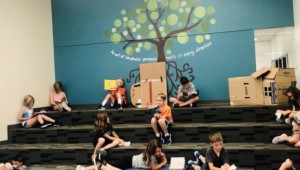3 Reasons To Expect the Unexpected…and What To Do About It

Millions of Americans woke up angry, afraid and confused last week. Perhaps you were one of the 50 million Americans that were pretty sure you knew what would happen. And then it didn’t. Instead, something inconceivable occurred. Something that no one would have predicted a year ago.
There is one thing we can be sure of: there will be more mornings like Wednesday. We live in a world where increasingly complex human systems interact in ways that we don’t understand and can’t predict with any reliability.
Recent examples of unexpected events include the Brexit (2016), gas prices plunging (2014-15), the rise of ISIS (2014), the Fukushima power plant disaster (2011), the flash crash (2010) and the housing crash that led to the Great Recession (2008-10).
Add malicious activities—Russians hacking Democrats, Koreans hacking Sony and terrorist acts in France and Belgium—and what appears to be an increasing number of natural disasters recently, including epic flooding in Louisiana and drought and fire in California, and you have a lot of unexpected events.
A decade ago Nassim Nicholas Taleb introduced us to black swan events—occurrences that deviate beyond what we expect and are extremely difficult to predict. There are three primary reasons we will continue to experience more unexpected events: urbanization, globalization and automation.
1. Urbanization. Nearly 70 million people are moving to cities every year (that’s 200,000 daily). Many cities are situated on coasts and waterways, making them vulnerable to flooding—which is exacerbated by global warming causing sea levels to rise along with more extreme weather. Sprawling cities create perfect conditions for disease outbreaks and illness associated with pollution and poor sanitation. And another thing—half of the big cities are in seismic zones.
Don’t get me wrong, I’m with Ed Glaeser. I think cities are one of mankind’s best inventions—and are getting better all the time given all the #SmartCities focus. It’s just that, given the concentration of all those people and the associated transportation and utilities, political and media machines and max mix cultural exchange, you have to expect the unexpected.
2. Globalization. Those mega cities are connecting in commerce in ways that are often more important than national boundaries—that’s the point of Parag Khanna’s new book Connectography.
It’s never been easier to code an app and launch a global business, and that’s true whether you’re in Boston or Bangalore. International trade continues to drive down the price of almost everything in your shopping cart.
With low-friction commerce comes more frequent dislocation. Let’s say you just bought a cab in Jakarta and the next week Uber shows up—a big black swan just landed on your house.
As we’ve seen in recent elections here and abroad, many folks feel left out of globalization and are sick of the shockwaves of disappointment.
3. Automation. “Much of the labor intensive manufacturing moved to areas of the world where cheap labor was abundant and had the raw materials or the ability to bring them in and ship the product at a reasonable rate,” said Charles Speelman, Superintendent of the Tri-Rivers Career Center in Marion Ohio.
But now BCG‘s Olivier Scalabre thinks we’re in the early innings of another manufacturing revolution that will promote productive local clean fabrication. This time, robots plus software that gets smarter over time will boost industrial productivity by more than a third, according to Scalabre. He sees the chance for a new wave of economic growth for regions that skill up fast.
The automation economy will speed dislocation, wiping out jobs in some regions and creating high-skill jobs in others. Change will be the constant in the lives and livelihoods of young people leaving high school in the next decade.
When you add a dose of machine intelligence to airline reservations, global communications and financial trading systems you get better service—and more crazy unexpected outages. Add the power grid and the 30 billion connected devices and stuff can go wrong in lots of new ways.
What Black Swans Mean for Education
Urbanization, globalization and automation are leading to more unexpected events. We should expect more political, economic and financial cataclysms—and it will be really bad when they coincide with increasingly frequent natural disasters. But don’t get me wrong, this isn’t all gloom and doom. There will be many days where unexpected opportunities to improve lives and livelihoods show up on your doorstep.
Here’s the point: we’re not able predict the future. There is one exception—there will be more novelty and complexity. Young people will experience more new stuff and more complicated situations.
Given the march of the exponential technology curve we’re living on, stuff is coming at us faster than ever. And because we’re all connected, the exposure to new stuff is unprecedented. And all that connected stuff is part of complex interconnected systems.
What can and should we do to prepare young people for lives full of novelty and complexity? The three most important ways we can build the cognitive muscles and mindsets are:
1. Modeling an Innovation Mindset. Our kids need to see that we are confident in our wayfinding skills in the face of novelty, but humble in our approach to learning about complex systems. They should see and hear that we appreciate effort, initiative and collaboration.
2. Co-Constructing Projects. There is no better way to expose young people to novelty and complexity than project-based learning (PBL): iterative sprints with diverse teams to public products.
As young people mature, they should have more voice and choice in project construction and final product demonstration. Project-based learning should be high quality, following Buck Institute for Education’s (BIE) Gold Standard PBL. For more on high-quality PBL, BIE executive director Bob Lenz writes about what the organization (and a coalition of more than 100 leaders) is doing to support high-quality PBL. For more, see:
- Preparing Students for a Project-Based World
- How Project-Based Learning Prepares Youth for Freelance Nation
- Preparing Teachers for Project-Based Learning
3. Skill Building Support. Project-based learning should be supported by skill development in design thinking, problem-solving and data analytics. Personalized learning can support PBL both before and during projects, providing the supports needed for all students to contribute to valuable outcomes.
Knowledge development is still important. Not to memorize facts, but initially for language development and later on for pattern recognition.
Young people are bound to see more change in a decade than we’ve experienced in the last three. There’s never been a better time to make a difference, build a business or launch a movement. They will face unprecedented levels of novelty and complexity—and we should create environments and experiences that prepare them for it.
For more see:
- Novelty & Complexity: 13 Youth Onramps
- How Smart Transportation Will Transform Cities
- Cause + Code: The New Impact Formula
Stay in-the-know with all things EdTech and innovations in learning by signing up to receive the weekly Smart Update. This post includes mentions of a Getting Smart partner. For a full list of partners, affiliate organizations and all other disclosures, please see our Partner page.








Ed Jones
One really had to be in a mythical place to have woke up Wed. surprised.
Especially, Tom & GettingSmart, who've had a chance to seek my council on this continuously the past 5 years.